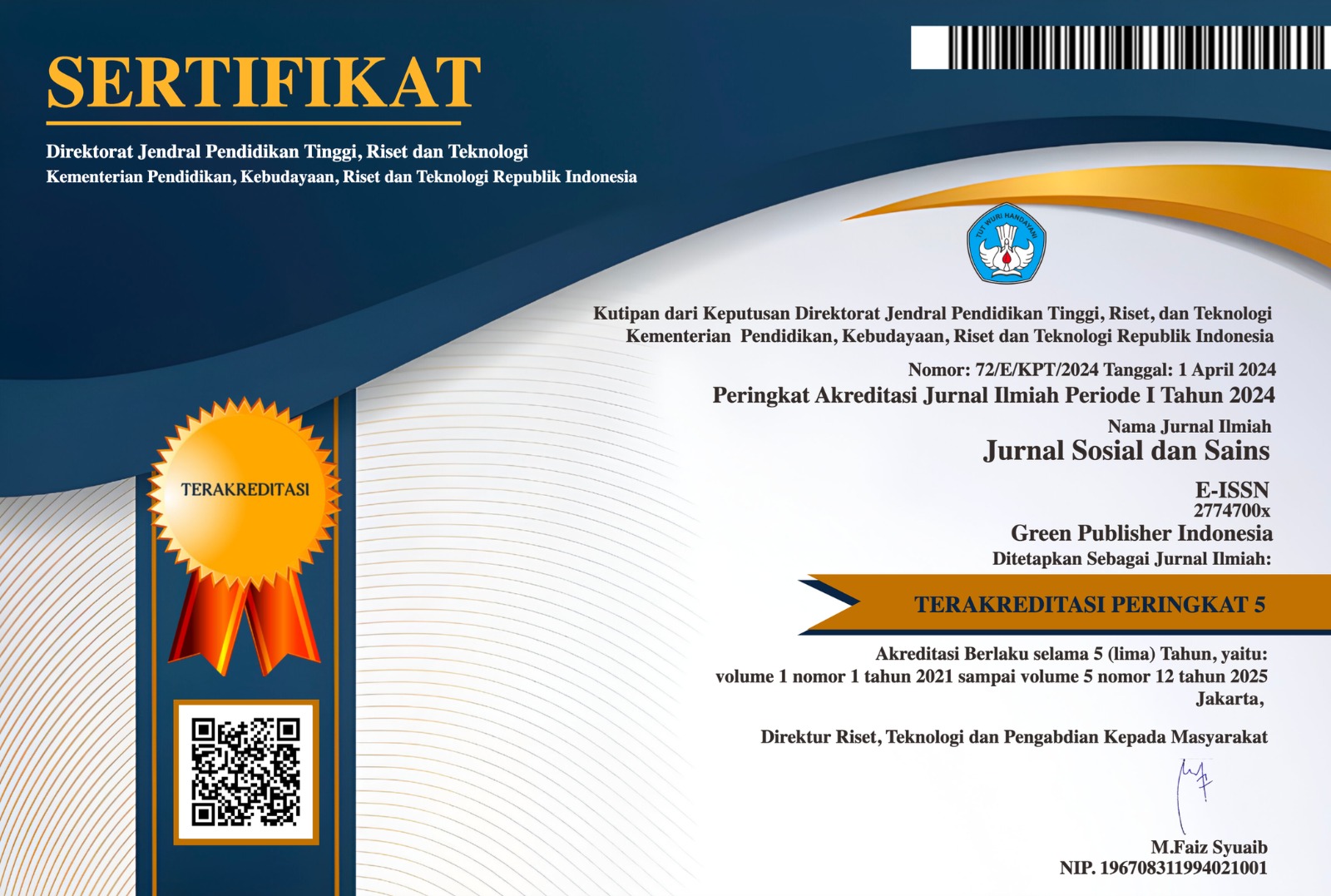Gut Microbiota On Erectile Dysfunction : a Systematic Review
DOI:
https://doi.org/10.59188/jurnalsosains.v5i6.32252Keywords:
Dysfunction, Gut Microbiota, Systematic ReviewAbstract
Erectile dysfunction (ED) has significant physical and psychological effects on both patients and their partners. Beyond disrupting sexual relationships and family dynamics, ED is often associated with comorbidities such as anxiety, depression, and other mental health disorders. A potential relationship is suggested by variations in our gut microbiota the composition between ED patients and healthy people. This study aims to evaluated relationship between gut microbiota and ED. Materials & Methods : A systematic review was conducted with PRISMA 2020 guidelines, with PICO framework to focus on individuals with ED. The intervention analyzed was gut microbiota compared to healthy controls, with the primary outcome being gut microbiota associated with ED. Search was performed across PubMed, Scopus, Web of Science, and Cochrane Library from 2020 to 2025 using keywords such as "gut microbiome," "gut microbiota," "intestinal microbiome," and "gut flora" combined with "erectile dysfunction." Inclusion and exclusion criteria were applied, and the risk of bias in studies was assessed using the Newcastle-Ottawa Quality Assessment Scale. Results : A total of 64 studies underwent screening, 7 were included in the final analysis. The results showed correlation between ED and changes in the gut microbiota. A higher risk of ED was associated with increased populations of Lachnospiraceae, Oscillibacter, Tyzzerella3, Senegalimassilia, and Actinomyces. On the other present, a lower risk of ED was related to Ruminococcaceae UCG013, Coprococcus 1, Lachnospiraceae FCS020, Prevotella, and Bifidobacterium. Moreover, ED patients had more species of Streptococcus, Subdoligranulum, Bacteroides, Fusobacterium, and Escherichia-Shigella genera compared to species Blautia, Roseburia, Ruminiclostridium 5, and Lactococcus. Conclusion : The role of gut microbiota in ED, with Lachnospiraceae, Oscillibacter, Tyzzerella3, and Senegalimassilia increasing risk, while Ruminococcaceae UCG013 is protective. However, further research is needed to understand microbial mechanisms and explore gut microbiota modulation as a potential therapeutic strategy.
Downloads
Published
How to Cite
Issue
Section
License
Copyright (c) 2025 Revantoro Artha Dwiprawira, Ariyo Sakso Bintoro

This work is licensed under a Creative Commons Attribution-ShareAlike 4.0 International License.
Authors who publish with this journal agree to the following terms:
- Authors retain copyright and grant the journal right of first publication with the work simultaneously licensed under a Creative Commons Attribution-ShareAlike 4.0 International (CC-BY-SA). that allows others to share the work with an acknowledgement of the work's authorship and initial publication in this journal.
- Authors are able to enter into separate, additional contractual arrangements for the non-exclusive distribution of the journal's published version of the work (e.g., post it to an institutional repository or publish it in a book), with an acknowledgement of its initial publication in this journal.
- Authors are permitted and encouraged to post their work online (e.g., in institutional repositories or on their website) prior to and during the submission process, as it can lead to productive exchanges, as well as earlier and greater citation of published work.







